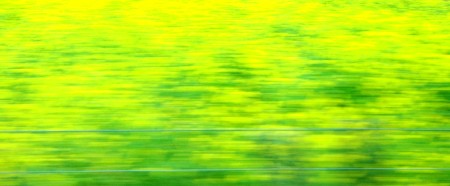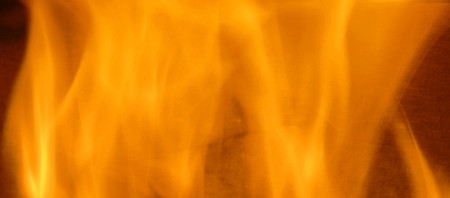Vata, Pitta and Kapha, the Tridosha, are unique in Ayurveda. A clear understanding of the attributes and concepts of these elements will enable one to understand one’s True Nature (referred to in Ayurveda as Prakriti).
All three Dosha are found in all that is matter and therefore in all people.
They govern all biological, psychological and physiological functions corresponding to the ‘Body’, and ‘Mind’ and act as a basic constituent and protective barrier in the body in its normal functioning. Because the combination and proportion of the three Dosha will vary for each person it bestows unique physical and psychological characteristics on each individual.
No two people are or will ever be exactly the same and we cannot apply a common law to all. The Dosha that is most dominant at birth will affect our personality, immunity, characteristics etc. the most. It is easiest to observe and identify the Dosha of children as they tend to act and respond in accordance to their true natures.

It should be understood that Dosha can be translated as fault, disturbed state, corruption, unhappiness.
The three Dosha are forces, and when they accumulate in excess in the body, disturbance and dis-ease often follows. ‘Like increases Like’ and therefore the primary means to manage an aggravated or excess Dosha is to apply the opposite qualities. Understanding the characteristic of each Dosha helps us to determine suitable ways to manage and pacify it. A Dosha may be aggravated, normal, or deficient. Usually we are most concerned about a Dosha that is aggravated.
Don’t forget we are all born with Dosha! So we are all born with disturbance, it is just a matter of to what degree and how that affects us.
We are born with our own unique constitution (combination of the three Dosha) and this is termed Prakriti.
Prakriti which means ‘first creation, nature or creativity.’ It is our inherent or karmic nature and with us from birth until death. Typically one Dosha or possibly a combination of two Dosha will be predominant in our Prakriti.
Ayurvedic diagnosis (primarily Naadi Parikshai or Pulse Diagnosis) will allow us to determine our birth constitution. The Prakriti of each individual is determined at conception and does not change during ones life span but remains unaltered, as it is genetically determined.

The combination of Dosha in us now, at this moment in time, is termed Vikriti or current disturbed state.
When Vikriti differs from our Prakriti there is an imbalance and we are not living according to our true nature or purpose. It is in this state of Vikriti that we may first encounter disturbance in the form of dis-ease or distress without understanding why. This is the starting point when discussing lifestyle, diet, and how to best manage our life to pacify this disturbed state. Sometimes our Vikriti and Prakriti are the same Dosha but may be more disturbed than at birth or it could be similarly disturbed.
Ayurvedic pulse reading (Naadi Parikshai) is required to determine Prakriti and Vikriti and the degree of disturbance.
An Ayurvedic diagnosis helps us to understand our true nature and our current disturbed state and we can then determine how to return to our Prakriti using correct and compatible diet and Life-style, and temporary correction and restoration (such as herbs and massage etc) to remove the excess Dosha and toxins from our ‘Body’ and ‘Mind’.
Once returned to our Prakriti, it is a constant process of adjustment and refinement for the rest of our life to live according to our own nature and the ever changing environment we live in. This is what living ‘naturally’ and achieving ‘balance’ means. What is right for one person will not be necessarily correct for another and the beauty of Ayurveda is understanding and explaining such natural laws. This understanding and living according to our Prakriti is the preparation we need to understand the instruments of the Body and Mind and appreciate and accept our weaknesses and strengths.
Explanation of each Dosha with links to more detail:
‘Vata Dosha’ – is the bodily wind principle. It can be translated as movement. That which moves is termed as ‘Vata’. It supports the two other Dosha. It also governs our sensory and mental balance and promotes mental adaptability and understanding. Vata controls the movement of blood in the circulatory system, air in the respiratory system, and excretions out of our body. It controls the nervous system and moves nutrients to cells and tissues for metabolism. It controls the thoughts and the activities of the mind. The intestines are the seat of Vata. Its qualities are dry, cold, subtle, light, mobile, rough, erratic, clear, fast, mobile, bitter, astringent, and pungent.

‘Pitta Dosha’ – is translated as Body ‘Fire’ and that which digests things. It is responsible for all chemical and metabolic transformations in the body. It also governs our mental digestion and our capacity to perceive reality and understand things. The small intestine, stomach, sweat glands, blood, fat, eyes and skin are the seats of Pitta. Its qualities are hot, oily, light, intense, fluid, sharp, soft, smooth, sour, pungent, and salty.

‘Kapha Dosha’ – is biological ‘Water’ and that which holds things together. It provides body and substance and gives support. It provides emotional support in life and governs such positive emotional traits as love, compassion, modesty, patience and forgiveness. It fills spaces in the body, giving biological strength, vigour and vitality. The chest is the seat of Kapha. Its qualities are oily, cool, heavy, stable, dense, smooth, dull, wet, slow, cloudy, sweet, sour, and salty.

